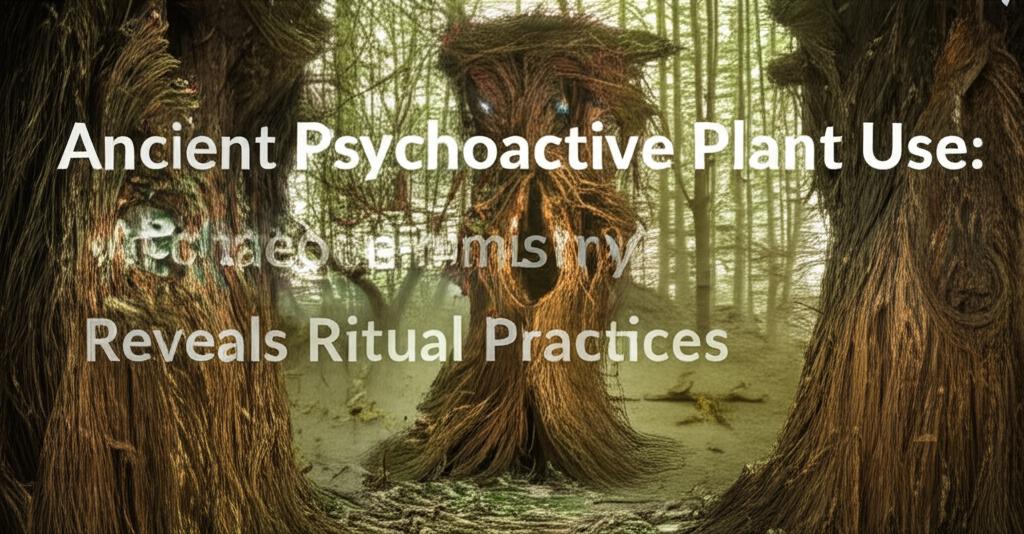Peering into the past has a new, powerful lens: archaeochemistry. This burgeoning field is dramatically reshaping our understanding of ancient rituals by uncovering direct chemical evidence of psychoactive plant use. Forget relying solely on artistic depictions or textual hints; scientists can now analyze microscopic residues on artifacts and even human remains, painting a far more vivid picture of how our ancestors interacted with the spiritual—and psychoactive—world.
Imagine unlocking secrets held within millennia-old pottery, tools, or even strands of hair. That's precisely what archaeochemists are doing. By employing sophisticated techniques like gas chromatography-mass spectrometry (GC-MS) and high-performance liquid chromatography (HPLC-MS/MS), researchers can identify the tell-tale chemical fingerprints of specific psychoactive compounds. These molecular clues are قطعية evidence that ancient cultures weren't just aware of mind-altering plants, but were actively and often ritually, incorporating them into their lives.
Recent discoveries span continents and cultures, highlighting the widespread nature of these practices. For instance, stunning findings from the Chavín de Huántar ceremonial site in the Peruvian Andes, dating back over 2,500 years, have unearthed snuff tubes crafted from bone. Chemical analysis of these tubes revealed residues of nicotine from wild tobacco relatives and, astonishingly, vilca bean (Anadenanthera colubrina), a potent hallucinogen containing DMT. This wasn't a casual affair. The artifacts were discovered in private, restricted chambers within the monumental stone structures, suggesting that these visionary experiences were likely reserved for elites and played a crucial role in establishing and maintaining social and political hierarchies. The Chavín, it seems, understood the power of a controlled narrative, with access to the divine potentially managed by a select few.
This isn't an isolated case. Research in the Americas has also identified the ritual use of datura in California, linked to ancient cave art and believed to allow initiates to "see beyond surface appearances." Further south, analysis of mummies from Cahuachi in Peru has pushed back the timeline for ayahuasca use and shown the early ritual consumption of the mescaline-containing San Pedro cactus. A 1,000-year-old ritual bundle from Cueva del Chileno in Bolivia even yielded a cocktail of psychedelics including harmine, bufotenine, and DMT.
Across the globe in the Arabian Peninsula, recent studies have pinpointed the earliest known use of Peganum harmala (Syrian rue). Analysis of Iron Age fumigation devices from the Qurayyah oasis settlement in northwestern Saudi Arabia, nearly 2,700 years old, detected harmala alkaloids. This indicates that the plant, known for its psychoactive and therapeutic properties, was intentionally burned and its smoke inhaled, likely for health, purification, or ritual purposes.
Even Europe is yielding its secrets. In Spain, analysis of human hair from the Es Càrritx cave in Menorca, dating back approximately 3,000 years, revealed the presence of atropine, scopolamine, and ephedrine. These substances, derived from plants like mandrake, henbane, and joint pine, can induce hallucinations and altered states of consciousness. The hair, some of which was dyed red and placed in decorated wooden containers, hints at shamanistic rituals and the symbolic importance of these psychoactive experiences.
The implications of these findings are profound. Archaeochemistry is not just identifying what substances were used, but how, where, and potentially why. It provides a tangible link to the intangible cultural heritage of ancient knowledge systems, offering insights into early therapeutic practices, spiritual beliefs, and the very fabric of ancient societies. From the visionary drugs used in Chinese rituals millennia ago to the ceremonial consumption of cannabis in the ancient Holy Land, the evidence points to a deep, globally pervasive human connection with psychoactive plants.
This is a rapidly evolving field, with each new discovery adding a piece to the intricate puzzle of our ancestors' inner lives. As analytical techniques become even more refined, we can expect archaeochemistry to continue to unveil the fascinating and often hidden role of psychoactive substances in shaping human ritual, belief, and the eternal quest for connection with the extraordinary. The story of ancient psychoactive plant use is far from over; in many ways, thanks to the power of archaeochemistry, it's just beginning to be told.

